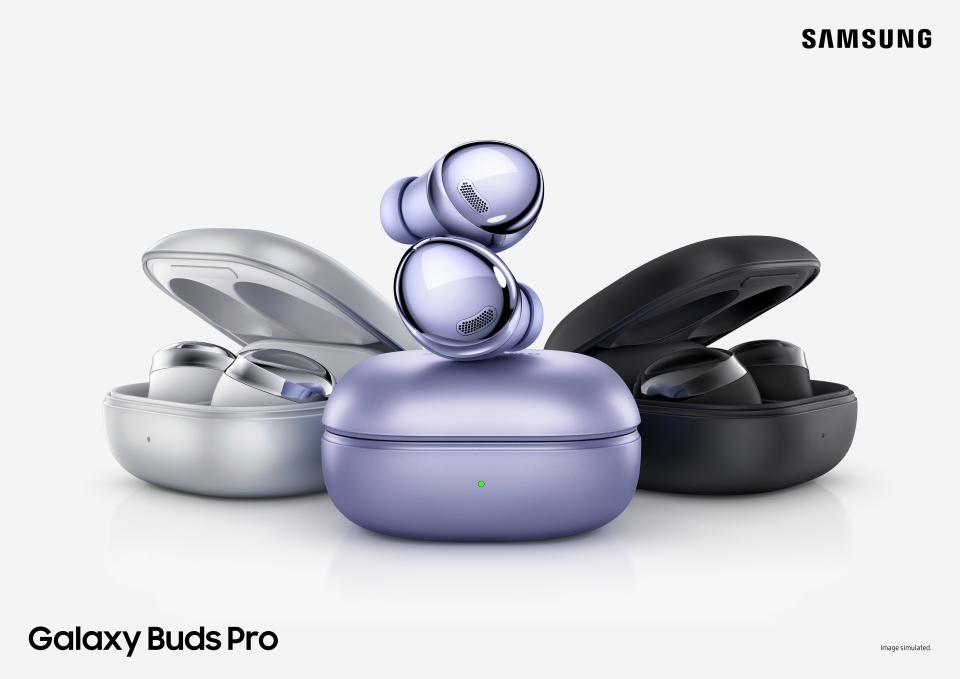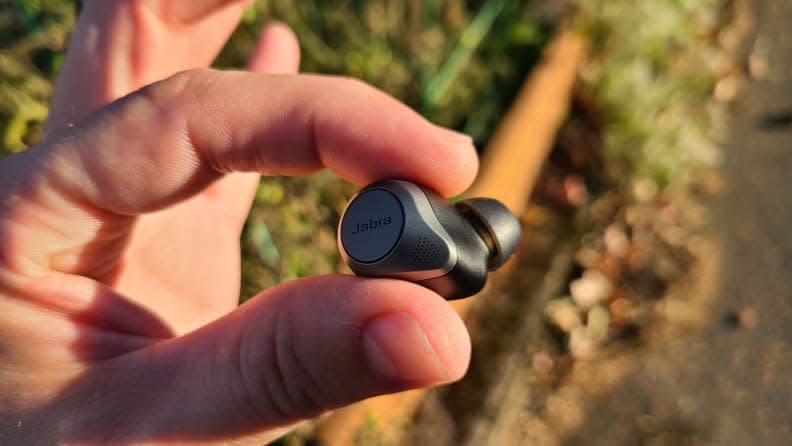These quality work-from-home earbuds won't break the bank
If your dog barks at a delivery person while you’re presenting on Zoom, did she make a sound? No philosophical calisthenics required here. Because of course she did. Everyone on the video conference heard her. Everyone.
In this pandemic era, we’ve all come to accept that, despite our best efforts to keep them separated, our co-habitants invariably will cough, clink and cry their way into our on-screen workplace. So if there’s anything tech could do to ease our work-from-home woes, well, sign us up.
Good news: Electronics makers have heard our pleas. In and around CES this past week, many are rolling out next-generation earbuds that don’t just sound better, they’re also built around a new, more open design aesthetic that makes them more comfortable to wear for long stretches and better at blocking out noise so you can concentrate. All at prices that won’t break the bank.
If budget tops your list, then this will be music to your ears: Prices are compressing as more players enter the market. Amazon, Google and Microsoft now offer buds. And HP previewed its own Elite wireless earbuds on Sunday.
The new open earbuds are forcing 2020 models down to around $150, compared to about $200 for the latest stuff. And some of last year’s tech is pretty good and continues to improve via firmware updates.
I’ve been testing two new-style earbuds – Jabra’s Elite 85t and Galaxy Buds Pro, which Samsung announced Thursday. And I’ve been comparing them not only to each company’s 2020 models, but also to my all-time favorites for music (Sony WF-1000XM3) and call quality (Plantronics Voyager 5200). Here’s what I learned.
What’s new
The first thing you’ll notice about the new earbuds is their shape and fit. Rather than jamming into your ear canal to block out noise, these buds welcome sound in, neutralizing it instead with technology. Onboard noise cancellation AI tracks three microphones in each ear that conspire to triangulate and isolate unwanted sound. The Samsung buds also have built-in accelerometers, so they can monitor jaw movement to help figure out when I’m talking. Practically cheating!

There are a couple of advantages to the more-open design. Air and audio are free to flow in, resulting in a more natural sound than the echo chamber-like seal of noise-isolating models. The freer fit also makes them a lot more comfortable to wear.
The downside is it takes time to find the right mix of comfort and stability. Toward that end, picking the right-sized tips is more important than ever. I had an easier time dialing in the 85t’s than the Buds Pro pair. But don’t let that steer you, as it’s as much about ear shape, preference and patience as anything.
In practice, the Buds Pro did a better job than the Elite 85t of isolating traffic noise as I walked and talked alongside suburban, pandemic-era rush hour traffic – that is to say, sort of busy. The Buds also offer better dust and water protection, which give them an edge in reliability at the gym and in the rain.

The 85t is the hands-down winner on music quality, with markedly truer, richer and fuller audio. Aiding the effort are two 12mm speakers in each ear – one each for treble and bass – compared to 11mm woofers and 6.5mm tweeters in the Samsung units.
So 2020
Jabra’s year-old Elite 75t’s are one of the better shove-it-in-your-ear buds. And they’re getting better. A few months ago, for example, Jabra added active noise cancellation, or ANC, via firmware update. Sound and call quality are a tick down from the 85t’s. But there’s something to be said for what a good old-fashioned barrier can do to eliminate outside interference.
Last summer, Samsung kicked off the open-design concept with the Galaxy Buds Live. Known affectionately as Galaxy Beans because of their kidney shape, Buds Live featured ANC, with better sound quality and call quality that continues to improve via firmware.

None of them match Sony’s 2-year-old WF-1000XM3 for pure music enjoyment. And the 4-year-old Plantronics Voyager 5200’s built-in boom proves there’s no substitute for proximity. But Voyager is a one-trick pony. Although call quality is unparalleled, the single-ear unit is not built for music. It’s also cumbersome and unsightly. And I’m tired of being made fun of every time I wear it.
I wish I was above that. But I’m not.

Bottom line
The comfortable, more natural-sounding open-style designs, a la the Jabra Elite 85t and the Samsung Galaxy Buds Pro, are much better suited than their predecessors to long days online with back-to-back Zoom meetings. But there are fundamental trade-offs to consider. Noise cancellation is still a work in progress. And fit takes time and patience.
Even so, I’m finding that when you need to keep your family close, but your workmates closer, sometimes the best thing to do is stick these open-style buds in your ears.
USA TODAY columnist Mike Feibus is president and principal analyst of FeibusTech, a Scottsdale, Arizona, market research and consulting firm. Reach him at mikef@feibustech.com. Follow him on Twitter @MikeFeibus.
This article originally appeared on USA TODAY: Best earbuds for work from home: New headphones from CES 2021

 Yahoo Movies
Yahoo Movies 
